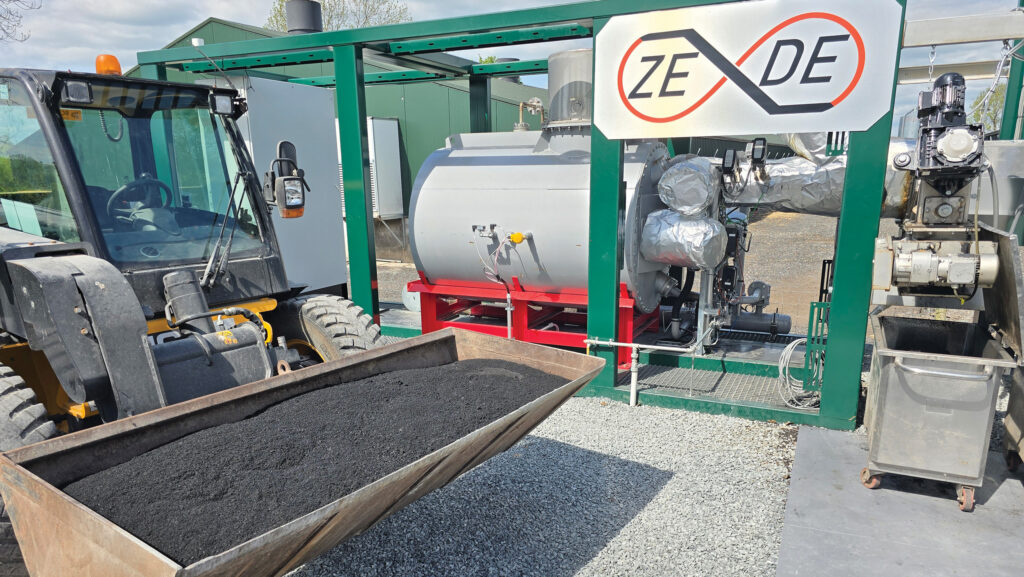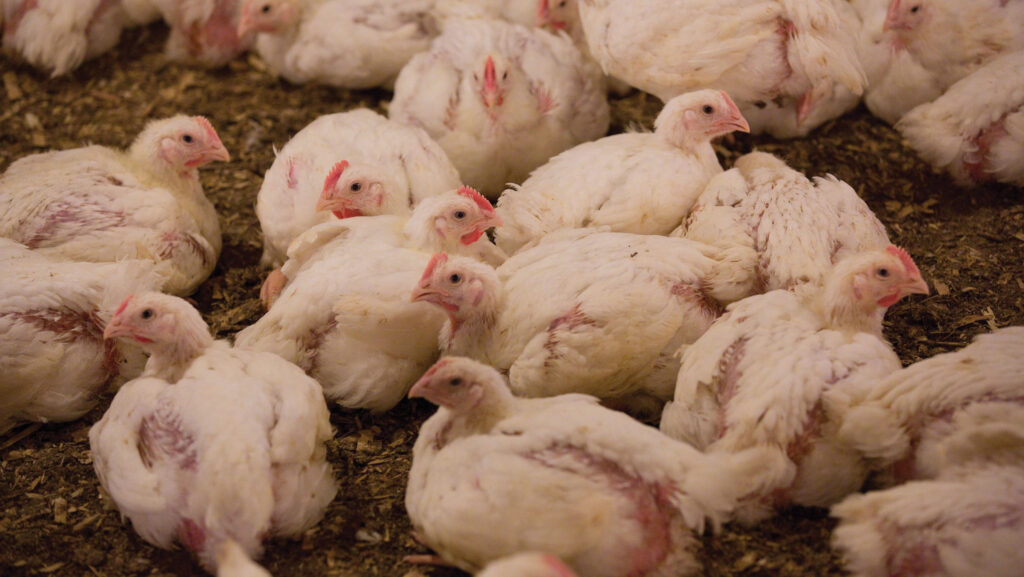How litter can be treated on-farm to heat broiler sheds
 © Forged Innovation
© Forged Innovation New technology is offering a novel solution to the environmental and financial challenges associated with manure produced by intensive broiler units.
Poultry litter is blamed for polluting rivers and waterways with excessive phosphates. One option is to convert it into thermal energy for use as space heating, displacing fossil fuels otherwise needed.
An Omagh-based mechanical engineering company is enabling that process after developing equipment that converts litter into energy.
See also: Benefits of increasing water oxygen content for broilers
Sean Dobbs, director of Forged Innovation, says it allows farmers to use the litter produced by their own birds to heat their sheds, reducing energy costs associated with heating by up to 90%.
Litter-to-energy systems – points to consider
Technical viability
The system must be technically reliable and sufficiently robust to meet the demanding conditions on broiler farms, such as high dust levels.
Labour requirement to operate and maintain the equipment is another consideration.
Cost
The system must stack up financially and offer a payback period that makes the investment economically viable.
Ease of use
A conventional energy system is convenient, therefore any system that displaces this must be simple to use with little extra effort needed to operate and maintain it.
Emissions
A system must meet UK regulatory requirements on air emissions.
Sole heating source
The Zede (zero emission, decentralised energy) system is thought to be the world’s first on-farm pyrolysis equipment that has the ability to utilise broiler litter at source and “as received”, he says.
(Pyrolysis is a process used to break down organic substances by subjecting them to very high temperatures.)
Litter needs no treatment or conditioning before it is fed into the equipment. Furthermore, it will provide the sole heating source for the sheds housing the birds that produce it, says Sean.
This eliminates costs associated with disposing of litter and significantly reduces business spend on energy.
“It brings energy security and a stronger degree of financial predictability to the average poultry farmer, as well as avoiding the issues associated with overapplication of this material on the land,” he says.
A secondary function of the pyrolysis process is production of a carbon-negative, slow-release biochar fertiliser.
This is sterile, safe to handle and use, and can be sold, generating an income to offset the capital cost of the equipment. Biochar is in demand, particularly as a horticultural fertiliser.

© Tim Scrivener
Modular system
The system has been developed to complement the setup on UK broiler farms.
The majority of these typically have two, three or four sheds with an average of about 50,000-130,000 birds on each farm – figures which were used to develop Zede.
Sean is a mechanical engineer who previously worked as a chief technical officer at a large recycling company.
He says that in the case of a 60,000-bird farm, it can process all the litter produced over one crop to provide the heat needed by the following cycle.
“As it is modular, either one or two systems can easily meet the demands of both two and four-house farms,” he says.
He calculates a five-to-six-year return on investment, regardless of the total number of birds.
The system consumes 8-9kWh of energy.
“Given this low power demand, this can easily be met with existing on-site power or a renewable power source, such as solar,” he adds.
Drier litter
On the first commercial farm where the system has been installed, there is a secondary benefit that comes from having a renewable source of heat.
“As the energy comes from the litter instead of purchased fuel, heat can be utilised as required, as opposed to the best cost balance. That means optimum house performance and bird welfare,” says Sean.
“The result is much drier litter and, critically, we have noted that ammonia generation is drastically reduced, which is extremely significant and impactful,” he points out.
“Controlling ammonia levels through dry litter provides a healthy flock environment and reduces condemnations caused by hock and footpad burns and breast blisters.
Dry litter is not only important for the health and welfare of birds, but the people who work in the houses.
However, the more consistent heat production and consumption resulting from the pyrolysis process means the sheds need more ventilation, and that comes at a cost.
Most broiler house heating systems will have high-intensity periods followed by a rest period, but Zede runs continuously for 20-30 days.
Without those controlled fluctuations, more heat is generated over the entire duration and that increases the ventilation requirement.
Indirect heating units have been developed by Forged Innovation to counter this, says Sean.
There are also measures farmers can take to help keep ventilation working as efficiently as possible, including having a regular maintenance programme for fans and checking belt tensioners regularly.
Air leaks, which usually occur around sidewalls, end doors and tunnel curtains, should be prevented too.
Adaptation for layers
As the technology is in its infancy, only one system is up and running on a commercial broiler unit, where it heats two 30,000-bird houses.
The technology is specific to broilers, but another is in development for treating layers.
“The system can work for free-range layers, but as the litter from laying hens is markedly different from broilers, we are working on variations to account for those differences,’’ says Sean.
Increasing regulatory pressures and energy prices makes the potential benefits and attractiveness of on-farm, litter-to-energy systems greater than ever.
Avara, which has 120 supplying farms within the River Wye catchment producing 160,000t of manure annually, is encouraging more of its farmers to adopt technology that turns manure into heat and power by burning it on-farm.
To meet this demand, other firms are also developing systems for eventual commercial rollout.
Other developments in poultry litter management
Interest in litter-to-energy options is increasing as pressure grows on the poultry sector to adopt alternative litter management practices to reduce the environmental challenges associated with this material.
While Zede offers on-farm processing, litter is also being used on a larger scale in the UK with several large-scale litter-to-electricity facilities operating, including in the renewable energy sector.
A facility run by Melton Renewable Energy at one of its biomass sites at Thetford, East Anglia, processes 11,000t of litter a year, which reduces the volume of litter spread on fields in a region with a high concentration of broilers.
Melton Renewable Energy’s system also generates a biochar, and this is used as a fertiliser by the farmers supplying litter. Processing removes nitrogen, so the fertiliser produced contains phosphorus and potassium.
